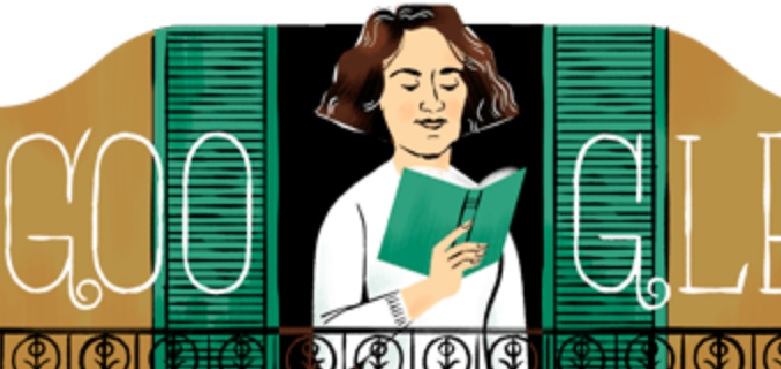Today’s Google doodle is of Carmen Laforet, a Spanish author who would have been 100 today. She contributed to the school of Existentialist Literature.
Carmen Laforet (6 September 1921 – Madrid, 28 February 2004) wrote after the Spanish Civil War. Her first novel, Nada, continued the Spanish tremendismo literary style begun by Camilo José Cela.
Early years
Laforet was born in Barcelona to an architect father and teacher mother. At the age of 2 her family moved to the Canary Islands where she spent her childhood. When aged only 12, her mother died. Subsequently, her father remarried, to a woman none of the children, including Laforet liked.
In 1939, aged 18, Laforet returned to Barcelona, studying Philosophy at university and living with relatives. She then moved to Madrid in 1942, where studied Law at the Universidad Complutense.
‘Nada’
During her second year at the Madrid university, Laforet withdrew from classes and devoted herself completely to writing. In 1944, from January to September she wrote her first, and most acclaimed, novel, Nada.
The work earned her the Editorial Destino’s Nadal Prize in its first year of publication (1945).
It is a novel of female adolescent development, considered a classic in 20th century Spanish literature. It deals with such themes as existentialism and the adolescent search for identity. She portrayed the vibrancy of youthful idealism and vitality against a backdrop of a grey, mediocre Spain.
Nada, her most successful novel, has remained consistently in print – it clearly stands the test of time. In fact, a new edition – with a foreword by Najat El Hachmi and an epilogue by Ana Merino – has just been published in Destino.
Children or books?
Today, at the Cervantes Institute, her children Agustín and Cristina Cerezales will deliver several letters, dedicated books and other objects. Laforet had an intellectual exchange with other great names of her time, such as Ramón J. Sender or Elena Fortún.
Was her love for her children or her books greater? This was often a question posed in interviews during her lean years. Laforet confesses to Sender, by letter, her literary discouragement, her laziness to write, in a harsh personal context. She said it was due to her separation in 1970 and the lack of economic stability – but also due to the political and social climate. She felt the prevailing machismo – which meant she was asked questions such as ‘books or children¡? – created a world she did not want to portray.
Other works
After ‘Nada’ came ‘La isla y los demonios’ (1950), set in the Canary Islands. ‘La mujer nueva’ (1955) is about a separated mother who becomes independent. ‘Sunstroke’ (1963) is a story of adolescent friendship, which continued in ‘Around the corner’ (2004), starring a bohemian painter. Laforet also published stories, collected in ‘The call’ (1954) or ‘The girl and other stories’ (1970).


